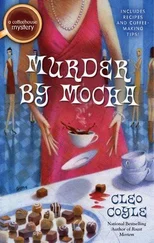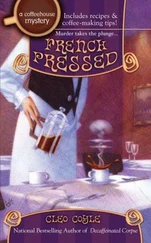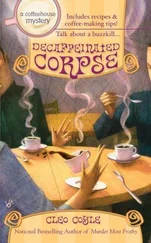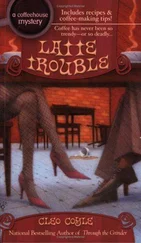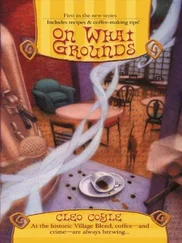Step 3—Form logs and glaze:Divide dough into two equal portions. On a floured surface, use floured fingers to form each portion into a round log measuring 12-inches long and no more than 1-inch in diameter. Place both logs onto a baking sheet covered with parchment paper or silicon sheets to prevent sticking. Press down lightly to flatten a bit. These skinny logs will spread out more during baking so be sure they’re well separated. Using a pastry brush, glaze the unbaked logs with the reserved egg white (just whip it up a bit with a fork before brushing). Now sprinkle both logs with granulated sugar. The glaze will help brown the logs and hold them together when you slice them.
Step 4—Bake and slice:Bake in a preheated 350ºF oven for 25 to 35 minutes (depending on your oven). Logs are finished baking when they are light golden brown, firm to the touch, and cracking a bit on the surface. Remove from oven, transfer off the hot baking sheet, and let cool completely. Wait at least 1 hour (3 is better!) and slice up like a loaf of bread. Ideally, cookies should be about ¾ of an inch in thickness. Each log will yield 18 to 20 mini-biscotti, depending on how thick or thin you slice them. For tips on preventing crumbling, see CLARE’S CRUMBLE ALERT at the end of the recipe.
Step 5—Second baking:In Italian the term “biscotti” actually means baked again. So turn the sliced mini-cookies onto their sides and bake again, in 350ºF oven, for 8 minutes on one side, then carefully (don’t burn your fingers!) turn over and bake another 7 minutes on the other side. You want your cookies to dry out and toast a bit on the surface.
Step 6—Dip in White Chocolate:Let your biscotti cool completely and then dip the top edges of each cookie with melted white chocolate. (Melting chocolate is easy but tricky. See melting instructions at the end of this recipe.) Set your freshly chocolate-dipped cookies on flat plates covered with wax or parchment paper for easy clean-up. (Do not use paper towels. They’ll stick to the chocolate!) Wait until chocolate hardens before moving again. To speed up this process, I pop the plates in the freezer for 5 minutes (just be sure to use the wax or parchment paper or some may freeze to the plate). Then fire up the coffee maker or espresso machine and enjoy!
CLARE’S CRUMBLE ALERT: Here are four tips to help prevent mini-biscotti from crumbling: (1) Let your logs cool completely, 3-4 hours is best. You can even allow the cooling logs to rest overnight. (2) Use a sharp, non-serrated knife. (3) Press straight down. No sawing. (4) Don’t try to slice cookies any thinner than ½ inch (¾ of an inch is ideal). Inevitably, a cookie or two will break apart. No worries, a few usually do (and you wanted to taste them anyway, didn’t you?). In the end, remember what Nonna Cosi always said: “Good is better than perfect.”
HOW TO MELT CHOCOLATE
WARNING: Make sure your bowls, pans, and utensils are completely dry before you begin. Even a few drops of water can make the chocolate seize up!
Easy microwave method:Place chopped chocolate pieces or chocolate chips in a dry microwave-safe bowl and warm on medium power for only 30 seconds. (Why? Because you are trying to prevent scorching, which will ruin the taste of your chocolate!) Now take the bowl out of the microwave and stir it with a dry rubber spatula. Continue warming, 30 seconds at a time, stopping to stir each time. As the chocolate gets closer to melting completely, shorten the interval to 15 seconds, continuing to stir until the chocolate is just melted. Because of their milk solids, white chocolate and milk chocolate are more sensitive to scorching than dark, so be careful not to overheat.
Stovetop method:Place chopped chocolate pieces or chocolate chips in the dry top of a double boiler with hot water in the pan beneath. If you don’t have a double boiler, create your own by placing a dry , heatproof glass or metal bowl over a saucepan with hot water in it. The fit between your larger bowl and smaller saucepan beneath it should be snug and not loose. WARNING: The water you use should be hot but not boiling or simmering; neither should it be touching the container holding the chocolate. While your white chocolate melts, stir constantly with a dry rubber spatula. Remove from the heat as soon as the chocolate is melted. Do not allow it to scorch!
Clare’s Golden Gingerbread-Maple Muffins with Warm Holiday-Spice Glaze
To bring the taste of home-baked holiday spices to her coffeehouse customers, Clare created these light, moist, gingery muffins for the Village Blend’s pastry case. You’ll notice there is no sugar in the muffin part of this recipe. The sweetness comes from the pure maple syrup, which is an important ingredient to get right. Pure maple syrup is not the same thing as “pancake syrup.” Pancake syrup is usually just maple-flavored corn syrup. Be sure to use real maple syrup for this recipe or the texture of your muffins will be dry instead of moist and buttery, and the taste will be less appealing, too. When in doubt, check the label. As Clare puts it: “Pure maple syrup will list only one ingredient—maple syrup!”
Makes 12 muffins
1 cup raisins
2 extra large eggs, room temperature
1 cup pure maple syrup (do not substitute pancake syrup)
1 tablespoon molasses (unsulphured, not blackstrap)
1 cup sour cream
2/3 cup milk
½ cup (1 stick) butter, melted
2 1/3 cups all-purpose flour, sifted
1½ teaspoons ground ginger
½ teaspoon allspice (see note)
1 teaspoon baking soda
3 teaspoons baking powder
½ teaspoon salt
Step 1—Make the batter:First, preheat the oven to 350°F. Place your raisins in a bowl and cover with hot tap water for 15 minutes to plump. Drain the water and set the raisins aside. Using a whisk or electric mixer, whip up the (room temperature) eggs for two minutes, until they double in volume, then beat in real maple syrup, molasses, sour cream, milk, and melted butter. In a second bowl, stir together the flour, ginger, allspice, baking soda, baking powder, and salt. Now blend your dry ingredients into your wet ones, fold in raisins, and mix the batter just enough until blended (do not overmix at this stage or your muffins will be tough).
Step 2—Bake the muffins:Spray the tops of your standard muffin pans with a nonstick cooking spray to prevent big muffin tops from sticking. Line 12 muffin cups with paper or foil liners. Fill each cup with the thick batter. (You may think there’s too much batter for 12 standard muffin cups, but it’s the right amount.) Don’t be afraid to heap the batter high, dividing it evenly among the cups until all the batter is used up. Filling the cups this much will create big, coffeehouse-style muffin tops. Bake for 25 to 35 minutes at 350ºF.
They’re done when a wooden skewer or knife inserted in the center of a test muffin comes out clean.
Step 3—Dust or glaze:Muffin tops will spread out during baking and fuse together. Use a knife to carefully separate them. Then remove the muffins from the pan as soon as they are cool enough to handle (about 5 minutes). Do not leave the muffins in the hot pan to cool or the bottoms will steam and become tough! You can pretty up these muffins with a light dusting of powdered sugar (shake the sugar through a fine-mesh sieve) or you can glaze the tops with the Warm Holiday-Spice Glaze below. Let cool completely before glazing.
Читать дальше

